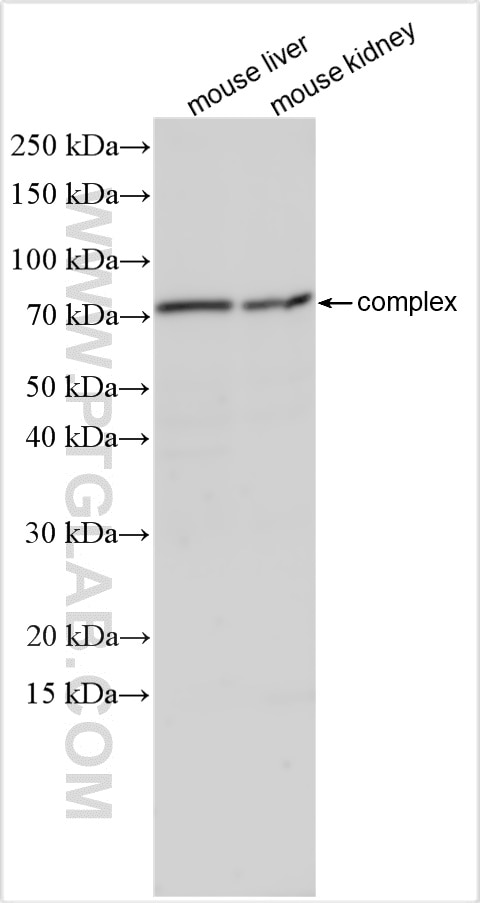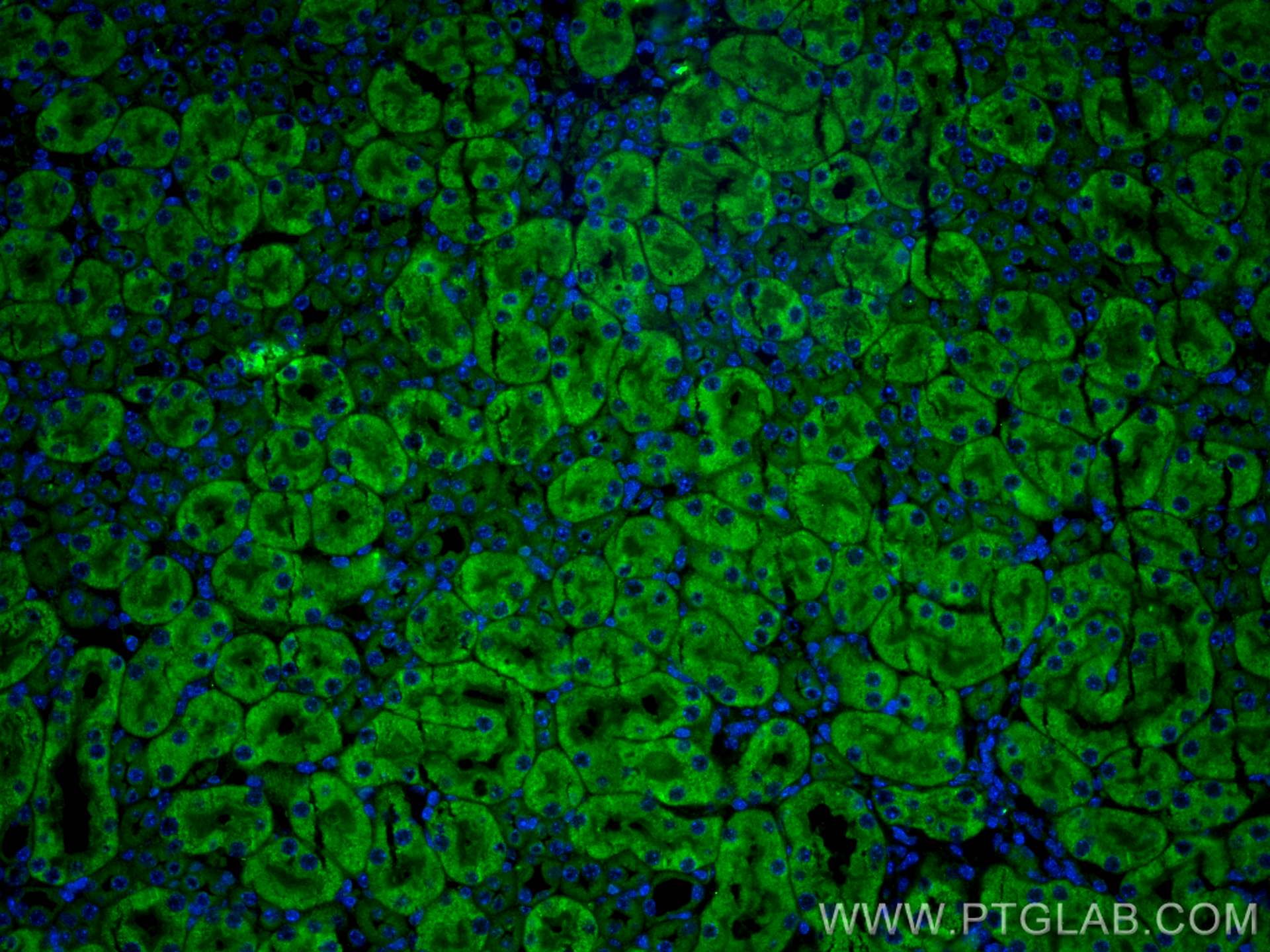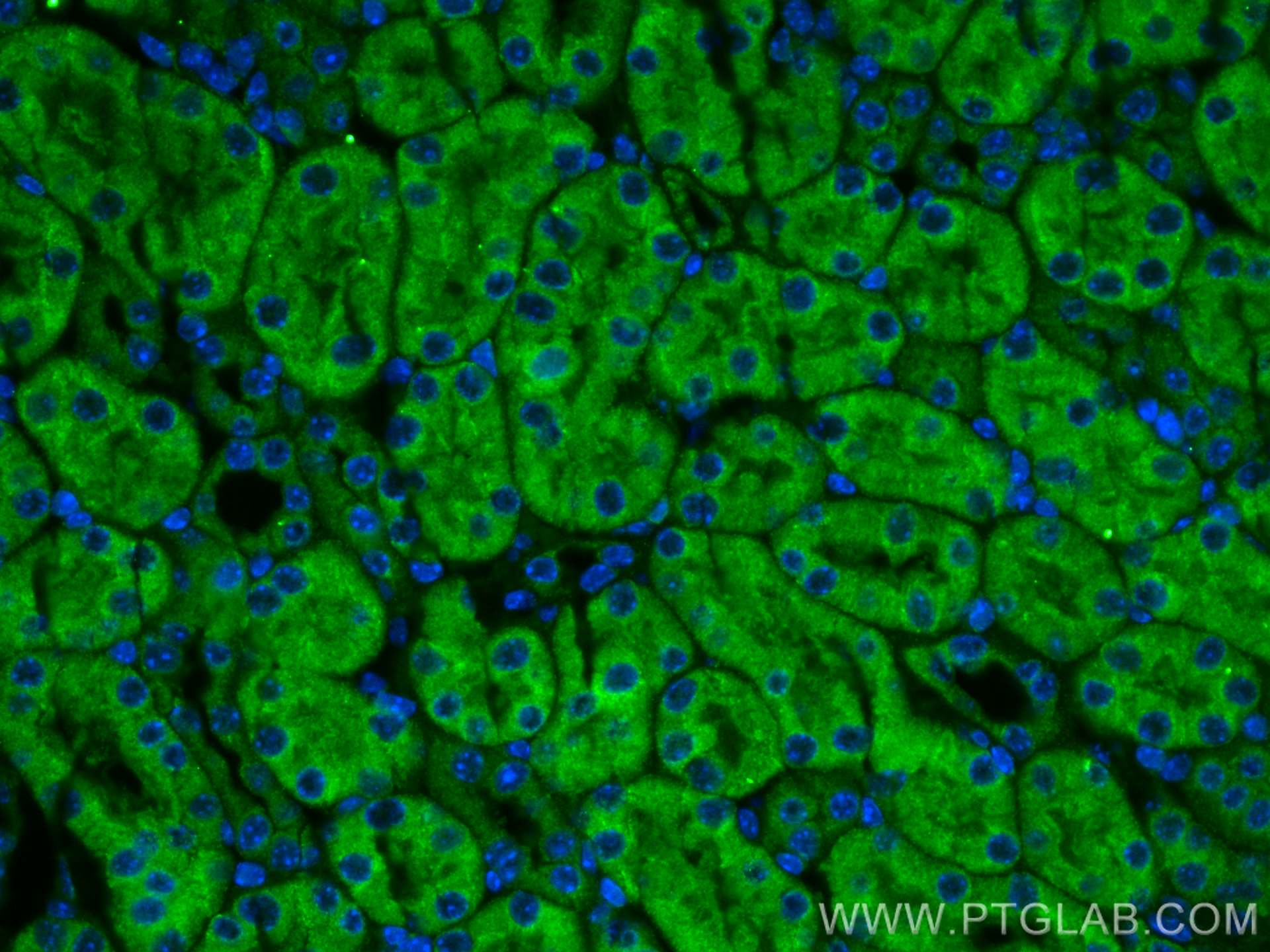Tested Applications
| Positive WB detected in | mouse liver tissue |
| Positive IF-P detected in | mouse kidney tissue |
Recommended dilution
| Application | Dilution |
|---|---|
| Western Blot (WB) | WB : 1:500-1:2000 |
| Immunofluorescence (IF)-P | IF-P : 1:50-1:500 |
| It is recommended that this reagent should be titrated in each testing system to obtain optimal results. | |
| Sample-dependent, Check data in validation data gallery. | |
Product Information
30627-1-AP targets LAPTM4A in WB, IF-P, ELISA applications and shows reactivity with human, mouse samples.
| Tested Reactivity | human, mouse |
| Host / Isotype | Rabbit / IgG |
| Class | Polyclonal |
| Type | Antibody |
| Immunogen |
CatNo: Ag6501 Product name: Recombinant human LAPTM4A protein Source: e coli.-derived, PGEX-4T Tag: GST Domain: 1-233 aa of BC000421 Sequence: MVSMSFKRNRSDRFYSTRCCGCCHVRTGTIILGTWYMVVNLLMAILLTVEVTHPNSMPAVNIQYEVIGNYYSSERMADNACVLFAVSVLMFIISSMLVYGAISYQVGWLIPFFCYRLFDFVLSCLVAISSLTYLPRIKEYLDQLPDFPYKDDLLALDSSCLLFIVLVFFALFIIFKAYLINCVWNCYKYINNRNVPEIAVYPAFEAPPQYVLPTYEMAVKMPEKEPPPPYLPA Predict reactive species |
| Full Name | lysosomal protein transmembrane 4 alpha |
| Calculated Molecular Weight | 27 kDa |
| Observed Molecular Weight | 70 kDa |
| GenBank Accession Number | BC000421 |
| Gene Symbol | LAPTM4A |
| Gene ID (NCBI) | 9741 |
| RRID | AB_3086376 |
| Conjugate | Unconjugated |
| Form | Liquid |
| Purification Method | Antigen affinity purification |
| UNIPROT ID | Q15012 |
| Storage Buffer | PBS with 0.02% sodium azide and 50% glycerol, pH 7.3. |
| Storage Conditions | Store at -20°C. Stable for one year after shipment. Aliquoting is unnecessary for -20oC storage. 20ul sizes contain 0.1% BSA. |
Background Information
LAPTM4A is an intracellular membrane protein that regulates the function of organic cation transporter-2 (OCT2) through direct interaction. LAPTM4A can also form a complex with A4GALT in the Golgi and shows at about 70 kDa.
Protocols
| Product Specific Protocols | |
|---|---|
| IF protocol for LAPTM4A antibody 30627-1-AP | Download protocol |
| WB protocol for LAPTM4A antibody 30627-1-AP | Download protocol |
| Standard Protocols | |
|---|---|
| Click here to view our Standard Protocols |








